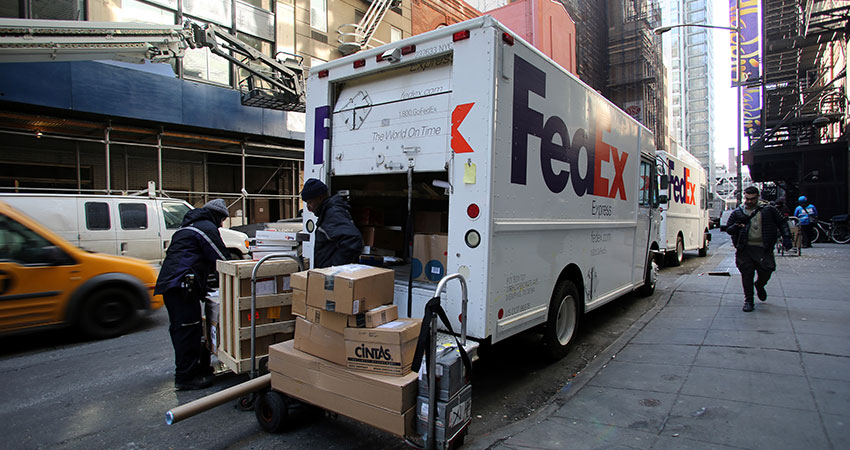And then there were three.
FedEx as expected added peak surcharge fees onto its pricing schedule for an expected blowout peak holiday season this year, adding up to $2 per package for the SmartPost final mile service and up to $5 per package for the next-day Express service. UPS and the U.S. Postal Service have already announced their peak pricing.
“FedEx continues to keep commerce moving and delivering critical shipments to homes during the COVID-19 pandemic,” the company said on its site in announce the fee changes. “As the impact of the virus continues to generate a surge in residential deliveries, we are entering this holiday peak season with extremely high demand for capacity and are experiencing increased operating costs across our network. We anticipate residential volume to continue to surge into the new year.”
For SmartPost, used by many retailers and ecommerce companies for their deliveries and handled by the U.S. Postal Service, the cost will rise $1 per package from Nov. 2 to Nov. 29, then increase to $2 per package from Nov. 30 to Dec. 6, and drop back down to $1 per package from Dec. 27 to Jan. 17, 2021.
An additional handling surcharge of $4.90 per package for larger items will run from Oct. 5, 2020 to Jan. 17, 2021 for FedEx Express, Ground and International Ground shipments.
Also, a peak residential delivery surcharge will be added from Nov. 2, 2020 to Jan. 17, 2021, based on a “peaking factor” calculation that compares a company’s average weekly shipments between Oct. 2-18, 2020 with those from Feb. 3-March 1, 2020, before the pandemic hit.
Taken together with increases at UPS and the USPS, it will be a painful season for many retail and ecommerce shippers already hit with price increases and volume limits from earlier in the year, and dealing with capacity constraints across the board as they hustle to secure enough for peak season.
Regional carriers are experiencing surging business as shippers are running into cost and/or capacity issues with the major carriers, and the surge is in turn impacting their own networks and service levels.
Shipping optimization platform firm Convey is reporting that regional carriers have increased their share of parcel shipping from 3.8% in 2019 to a whopping 17% in 2020. This total also includes results from DHL eCommerce – which uses USPS Parcel Select like UPS and FedEx for last mile – along with traditional regionals such as LSO, LaserShip, OnTrac, Speedy and Pitt Ohio.
“With FedEx migrating away from SmartPost, we’re seeing a lot of diversification and shippers identifying regional carriers,” said Carson Krieg, co-founder and director of strategic partnerships for Convey. “If they have inventory around the country, they don’t have to depend on the big two for national coverage. We’re seeing dynamic changes month over month due to challenges with UPS and FedEx.”
Satish Jindel, president of Shipmatrix, another shipping data and analytics firm, said the market share of the regional carriers has fluctuated between 5% and 7% for years. Shipmatrix does not include DHL eCommerce in its calculations; Jindel said that would bump up the regional share to 12% or 13%. Still he agreed they’re seeing a booming trade with some close to maxing out for the year. “Instead of the regionals calling shippers, the shippers are reaching out to them to seek extra capacity,” Jindel said.
Mark Schoeman, president of The Colography Group, said the regionals are “witnessing enormous growth” due to pandemic-driven ecommerce demand and the capacity limits of the major carriers.
“They’re not maxed out yet, but they are filling up capacity quickly, seeing a lot of volume,” Schoeman said. “The surge has caused a slight degradation in their service, as it does put pressure on their networks.”

